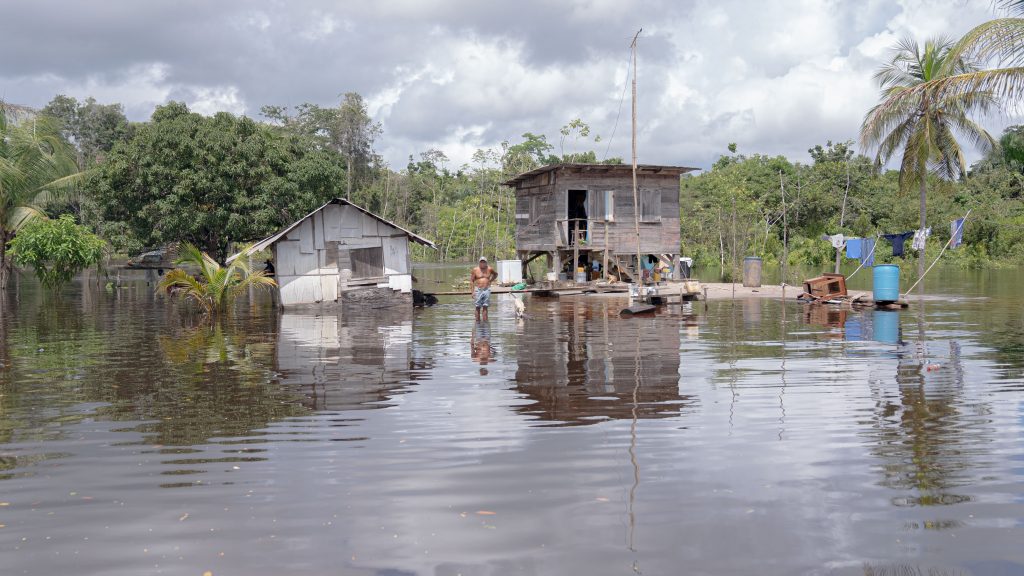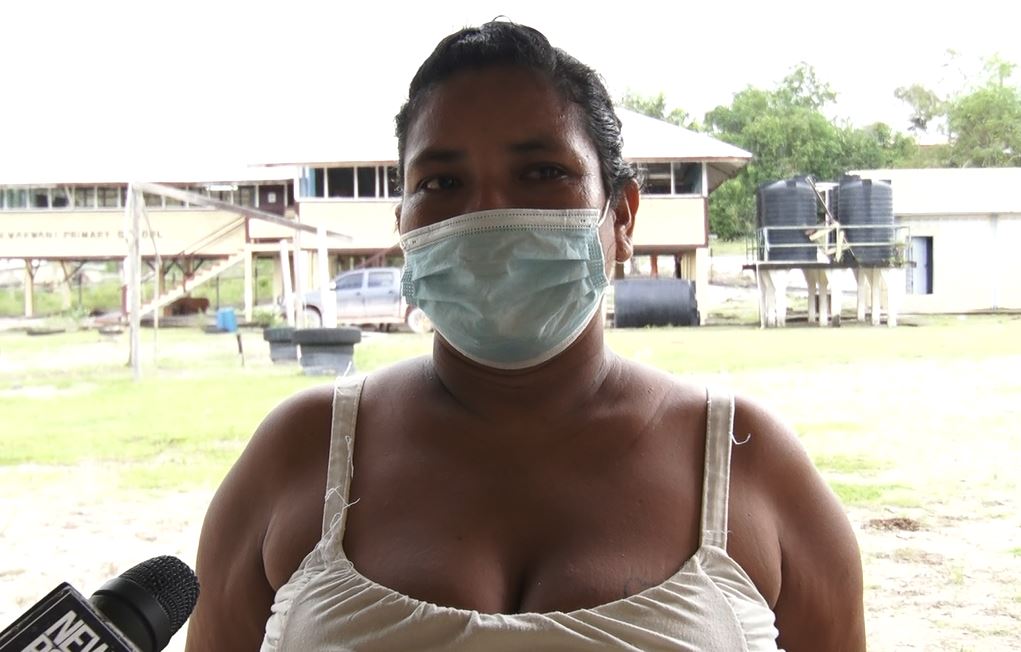
By Vishani Ragobeer
An elderly couple and their two dogs stand on the sandbank that their wooden house is situated on. It would appear as though they live on their own island as this small stretch of sand is surrounded by a river of water. But, they do not.
This family lives at the waterfront of Kwakwani, a community in Region 10 (Upper Demerara- Berbice); this waterfront area is separated from the Berbice River by a long stretch of road and a sandbank.
Over the past few weeks, however, there has been a significant increase in the water level of the river which, coupled with heavy rainfall characteristic of the May/June rainy season, has led to the inundation of the waterfront area. The water, according to the Regional Chairman of Region 10, Deron Adams, increased beyond 13 feet.

The elderly couple’s house has not been submerged but many other residents living in this area have not been as fortunate. Those who live in flat houses, in particular, had to evacuate since their houses became entirely submerged.
Telford Kurtzious was one such resident who lived in a flat house near the bank of the Berbice River. While speaking with the News Room on Saturday, he lamented that he was forced to move into his father-in-law’s two-storey house since his became inundated about two weeks ago.

“We seeking other places to go, other land,” Kurtzious said. “Up to yesterday, we were cleaning up to move to higher land.”
Anasha Simmons, a pontoon operator at the Kwakwani waterfront area, said that she has never witnessed the water level this high, though the Berbice River has overflowed before. On Saturday, the water made its way past the landing where she operated and had begun creeping up her stairs.
“It’s devastating. (People) are accustomed to the customary yearly flooding within the community, however, this year has really hit them hard because they haven’t expected it to come this high,” Kwakwani journalist, Solomon McGarrell said, during a visit to the flood-affected areas.

The journalist explained that residents prepare each year for some amount of flooding during the rainy season, due to their proximity to the Berbice River, which is one of the three main rivers that flow through Guyana.
He said this year, the flooding began in the third week of March and though it receded then, by April month end to the beginning of May, the water began rising steadily and did not recede.
The journalist said usually the residents of the waterfront and Lamp Island areas are the ones who are affected by the annual flooding. But even so, McGarrell explained that the nearly 14 feet of water that affected Kwakwani this year has left many residents stunned and afraid.
Generally, the community of Kwakwani has a population of about 3,000 people, according to the Regional Chairman. With dozens of homes at the waterfront area inundated, a shelter was set up at the Kwakwani Primary school, which is located more inland.
This shelter houses those residents who have not been able to stay with their relatives or friends. By Saturday, 48 individuals, including 35 children, had evacuated their houses and were staying at the school.
Sunita Fredericks and her seven children, including a one-year-old baby, were the first family to occupy the Kwakwani shelter. This family resided in Lamp Island when they noticed that the water had been gradually creeping into their house, day by day.

“We see snake (and) the snake was swimming coming to the house and them children was frightened, also I was frightened because my children’s father was not around and it was very scary,” Fredericks said, recounting what it was like dwelling in her flooded house.
Importantly too, she said that her younger children usually play in the yard and this was no longer safe due to the emergence of the floodwaters and the possibility of water-borne diseases. Afraid of the potential danger of staying in the floodwaters, Fredericks made the decision to bring her family to the shelter.
Since being there, she said that they have been comfortable enough.
This shelter was set up by the Civil Defence Commission (CDC) with the support of the regional authorities. During a recent press conference, the Head of the CDC, Lieutenant Colonel Kester Craig assured members of the public that affected residents would be taken care of in these spaces as long as help is needed.
Still, living in a shelter does not compare to living in the comfort of your own home. And, Fredericks said that once the floodwaters recede, she will be returning to Lamp Island.
[espro-slider id=114559]
Importantly, however, the woman also said that she would be looking for somewhere else to live permanently since she is unsure whether the floods would be as bad, or even worse, in subsequent years.
In an attempt to provide some relief to the flood-affected residents in Kwakwani, Minister of Human Services and Social Security, Dr. Vindhya Persaud and a team from the ministry visited Kwakwani on Saturday.
While there, food and sanitisation supplies were distributed. The minister acknowledged that these supplies would only provide a tidbit of relief to the people who have been plunged into disaster but she emphasised that they must be continuously supported.
“This is unprecedented rainfall and unprecedented flooding and the most we can do at this time is to pool our efforts to see how we can alleviate and address the needs that have been as a result of these kinds of floods,” Minister Persaud said.




